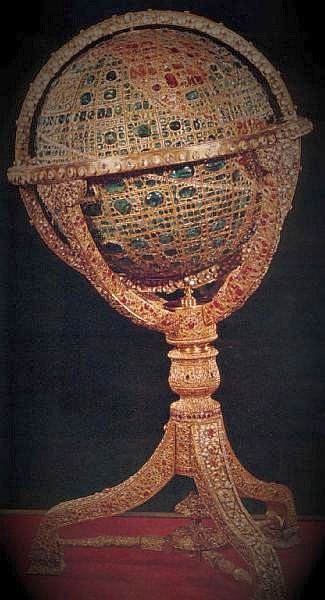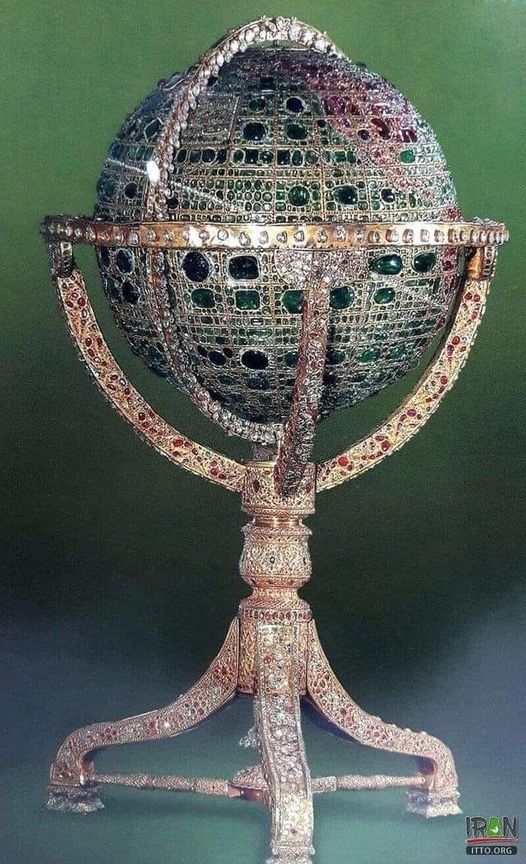Nestled within the hallowed halls of the National Jewels Museum in Tehran, Iran, lies a treasure beyond compare—a globe crafted from the purest gold and adorned with a dazzling array of precious gemstones. This magnificent masterpiece, part of the illustrious Persian Crown Jewels collection, stands as a testament to the opulence and grandeur of a bygone era, a symbol of the wealth and power that once graced the Persian Empire.

Commissioned during the reign of Shah Nasseridin, spanning from 1848 to 1896, this extraordinary globe is a marvel of craftsmanship and artistry, embodying the pinnacle of Persian jewelry-making techniques. Weighing over 34 kilograms, it is crafted from solid gold, its surface gleaming with a brilliance that rivals the sun itself. But it is not merely the gold that sets this globe apart—it is the exquisite array of gemstones that adorn its surface, transforming it into a dazzling spectacle of color and light.

More than 51,000 diamonds, emeralds, rubies, and sapphires adorn the surface of the globe, each one meticulously set by master jewelers to create a mosaic of unparalleled beauty and complexity. From the shimmering depths of the emerald green to the fiery glow of the ruby red, every gemstone radiates with a vibrancy and intensity that defies description. Together, they form a kaleidoscope of color that captivates the eye and stirs the soul—a testament to the boundless wealth and sophistication of the Persian Empire.

As visitors gaze upon the globe of the Persian Crown Jewels, they cannot help but be awestruck by its sheer magnificence. Its surface is a veritable treasure trove, a testament to the wealth and power of the Persian monarchs who once ruled over vast swaths of land from the shores of the Mediterranean to the mountains of Central Asia. Each gemstone is a symbol of conquest and triumph, a testament to the splendor and majesty of a civilization that once stood as a beacon of culture and enlightenment in the ancient world.

Yet, beyond its aesthetic beauty, the globe of the Persian Crown Jewels serves as a reminder of the rich cultural heritage and artistic legacy of Iran. For centuries, Persian artisans have been renowned for their mastery of jewelry-making, creating exquisite works of art that have captivated the imaginations of people around the world. The globe stands as a testament to this legacy, a shining example of the skill and ingenuity that have been passed down through generations of craftsmen.
Today, as visitors from around the world flock to the National Jewels Museum in Tehran to marvel at this extraordinary treasure, they are transported back in time to an era of splendor and magnificence—a time when the Persian Empire reigned supreme, and the jewels of its crown dazzled the world with their beauty. And as they gaze upon the globe of the Persian Crown Jewels, they are reminded of the enduring legacy of a civilization that continues to inspire and captivate us to this day.




